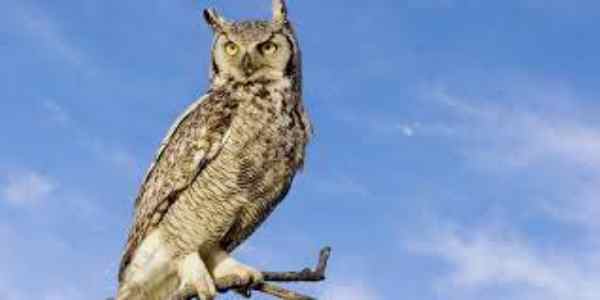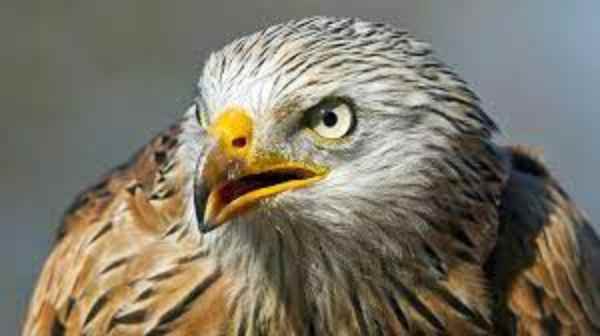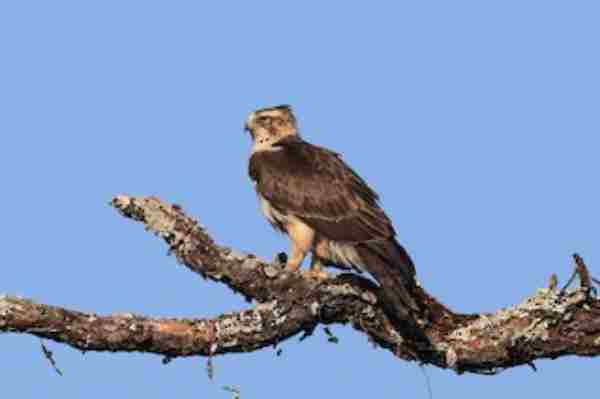Birds with talons are remarkable creatures that possess a unique set of tools to assist them in their daily lives. These natural weapons, often used for hunting, are present in several species such as eagles, owls, hawks, and vultures. These talons, however, serve more purposes than just capturing prey. They are crucial for actions like climbing, digging, perching, and protection in a variety of environments.
Table of Contents
Nonetheless, hunting remains the primary usage of talons for these birds. Overall, these creatures exhibit fascinating physical traits, making them adaptable and successful in many different settings
List of 8 Birds With Talons
Bald Eagles

Height – 3 feet
Talon Length – 2 inches
Bald eagles possess four prominent claws, with three situated in the forward direction and one known as the hallux toe positioned at the rear. The length of each talon is approximately 2 inches. On average, these eagles weigh around 8.8 – 13.2 lbs, with the females being 25% larger in size. Despite their status as one of the mightiest avian creatures globally, bald eagles typically target smaller prey.
Their primary food source consists predominantly of fish, followed by carrion and small terrestrial mammals. In addition to their exceptional visual capabilities, their talons serve as the primary tools for hunting. Bald eagles employ their feet to grasp, enclose, and dispatch their prey. The gripping strength of bald eagles resides primarily in the muscles of their feet rather than the talons.
However, the curved arrangement of their talons proves highly effective in confining prey, particularly slippery fish. On average, a bald eagle possesses a gripping force of approximately 400 pounds per square inch (psi), which is approximately ten times more powerful than a human’s grip strength.
Ospreys

Height – 2 feet
Talon Length – 1.2 inches
The osprey, another bird known for its fish-hunting abilities, possesses specialized talons for this purpose. While fish constitute 99% of their diet, ospreys are also capable of preying on invertebrates and small terrestrial creatures like rabbits or snakes. The lengthy and sharp talons of ospreys, measuring around 1 inch, contribute to their high success rate in hunting.
In contrast to other birds of prey, ospreys snatch their fish directly from the water. Additionally, these birds possess remarkable vision, surpassing the average person’s eyesight by six times, enabling them to spot fish from significant distances, sometimes up to 100 feet above. Once they identify their potential prey, ospreys execute precise plunges into the water, leading with their legs, and emerge with fish securely grasped by their curved talons.
Peregrine Falcons

Height – 1.5 feet
Talon Length – 1.12 inches
The peregrine falcon, a carnivorous and formidable raptor, possesses impressive talons. With a total of four talons—three positioned at the front and a flexible talon known as the hallux at the back—the peregrine falcon’s talons can reach lengths of up to 1.1 inches. While they may not have the longest talons among birds of prey, their agility and speed compensate for this. In fact, peregrine falcons hold the title of being the fastest birds in the sky.
They can achieve speeds of up to 186 mph, diving swiftly and catching their prey off guard. Peregrine falcons prey upon more than 500 diverse bird species and, if the opportunity arises, even target bats.
However, their preferred prey consists of ducks, songbirds, shorebirds, pigeons, grebes, and gulls. Additionally, peregrine falcons are not averse to pilfering kills, such as fish and rodents, from other birds of prey, showcasing their resourceful nature.
Red-tailed Hawks

Height – 2 to 2.2 feet
Talon Length – 1.33 inches
Red-tailed hawks may be a familiar sight soaring high in the sky, but these magnificent birds are also impressive predators. With three curved front-facing talons and a hallux, their talons are about 1.33 inches long and used to snatch, stab, and tear the flesh of their prey. Red-tails are the largest buteo hawks, able to hunt and lift prey weighing up to 3.5 pounds.
They commonly hunt rodents like squirrels, rabbits, and hares, but also have been known to take down other birds. Due to their hunting prowess, red-tailed hawks are sometimes captured and trained to be falconers, but in the US, only juvenile red-tails that are just leaving the nest can be legally taken for this purpose. Regardless, these birds of prey continue to awe and inspire with their aerial acrobatics and impressive hunting abilities.
Black Vultures

Height – 1.8 to 2.4 feet
Talon Length – 1 inch
Black vultures, also known as cinereous vultures, hold the distinction of being the largest among all vulture species. Unlike some other birds discussed, black vultures possess talons that are not particularly sharp or efficient. This physical characteristic contributes to their role as scavengers rather than active predators.
Even when indulging in a feast, the talons of black vultures are relatively blunt, leading them to rely on their beaks to tear apart animal flesh. The talons of these vultures resemble more nail-like structures. While they may not possess the most visually striking appearance among birds of prey, vultures fulfil a crucial ecological role by consuming decaying biomass, including deceased animals and faeces, thereby aiding in the cleaning of ecosystems.
Great Horned Owls

Height – 1.4 to 2.1 feet
Talon Length – 2.4 inches
The great horned owl, belonging to the owl family, stands as one of the largest avian species in its group. These owls are also commonly referred to as tiger owls due to the distinctive camouflage-like patterns present on their feathers. Similar to tigers on land, great horned owls possess remarkable stealth and silence even during flight. They possess four talons, including a hallux, with each talon measuring approximately 2.4 inches in length. These birds can exert a gripping force of up to 300 pounds per square inch (psi). When their 4.6-foot wingspan is spread alongside their camouflage skin and powerful talons, great horned owls become an imposing sight, rivalling the formidable nature of tigers.
While hunting, they can reach speeds of up to 40 mph, making them the fastest among all owl species. Although there are birds of prey that can outfly them in terms of speed, great horned owls rely on their stealth rather than swiftness to capture their prey. Their diet encompasses a wide range of creatures, including large birds of prey such as peregrine falcons, as well as small mammals and rodents like squirrels.
Harpy Eagles

Height – 2.8 to 3.4 feet
Talon Length – 3 to 4 inches
When discussing birds with impressive talons, it is impossible to overlook the harpy eagle. These majestic creatures claim the title of the largest and most powerful eagles to grace the skies. Their stature can reach up to an impressive 3 feet, while their wingspan spans approximately 6 feet in length. Like other raptors, they possess four talons, each measuring up to 4 inches in length.
These talons exhibit a curved and razor-sharp design, capable of exerting several hundred pounds of force. In a matter of seconds, the harpy eagle can crush the skull of its prey with these formidable weapons. When in pursuit, they can reach speeds of up to 50 mph, utilizing their immensely powerful and flexible wings to launch attacks from above with their feet extended or from below.
Harpy eagles are truly formidable predators, known to prey upon a variety of tree-dwelling mammals, including monkeys and sloths. Their presence instils a sense of awe and fear in their surroundings.
Red Kites

Height – 2 to 2.2 feet
Talon Length – 1.5 inches
Let’s conclude our list of birds with talons by mentioning red kites. These birds possess a certain elegance, especially with their distinctive forked tails. However, they are not particularly adept hunters. While red kites do have talons similar to other birds of prey—sharp and curved in nature—they primarily rely on scavenging rather than actively hunting.
Their diet predominantly consists of carrion from various animals and roadkill. Although they occasionally engage in hunting small mammals such as voles, earthworms, reptiles, and occasionally young birds, it is not their primary mode of obtaining sustenance.
Red kites have gained popularity in urban areas, particularly in cities across the UK, where they thrive by consuming a variety of food sources. This includes meat like chicken provided by homeowners or even pilfering food from people in parks.
FAQs
What Are Bird Talons Used For?
These sharp, curved appendages are used for a variety of purposes, including hunting, defence, and perching. Depending on the species, bird talons can be quite large and powerful, capable of grasping prey tightly or delivering a lethal strike. Falcons, for example, use their talons to hunt and kill other birds and small mammals, while owls use their talons to capture and crush their prey. In addition to hunting, bird talons are also important for maintaining balance and stability when perching on branches or other surfaces.
What Are Bird Talons Made Of?
The answer may surprise you. Unlike our fingers and nails, which are made of keratin, bird talons are made of bone! Specifically, they are an extension of the leg bones, and they are covered with a hard sheath of keratin for protection. This unique structure allows birds to exert an incredible amount of force when catching their prey, making for a swift and effective kill.
What Bird Has the Largest Talons?
The Harpy Eagle, native to the rainforests of South and Central America, boasts talons that measure up to an astonishing 5 inches in length. These massive hooks are capable of exerting a pressure of up to 130 pounds per square inch, making them truly one of the most fearsome predators in the avian kingdom.
Final Words
Congratulations, you are now a certified bird expert! With this newfound knowledge of birds with talons, you are sure to impress your friends and family at the next pub quiz. No longer will you be stumped by questions about what kind of bird is capable of swooping down and grabbing its prey with its sharp talons. Whether you’re an avid bird watcher or simply interested in expanding your general knowledge, this article has provided valuable information that you can use to show off your skills. So get out there and spread your new bird knowledge with confidence!
Reference:
- https://www.audubon.org/news/till-death-do-them-part-8-birds-mate-life
- https://www.nature-watch.com/images/Talons%20Article.pdf
- https://en.wikipedia.org/wiki/Harpy_eagle

Jeevan Kodiyan
An animal enthusiast with an interest in zoology, studying the behavior and activities of animals in the wild habitat. I work on research projects related to species conservation and endangered species protection. I also leverage zoology to become an educator, educating others about the importance of protecting our natural environment and the beauty of animals in their natural habitats.









